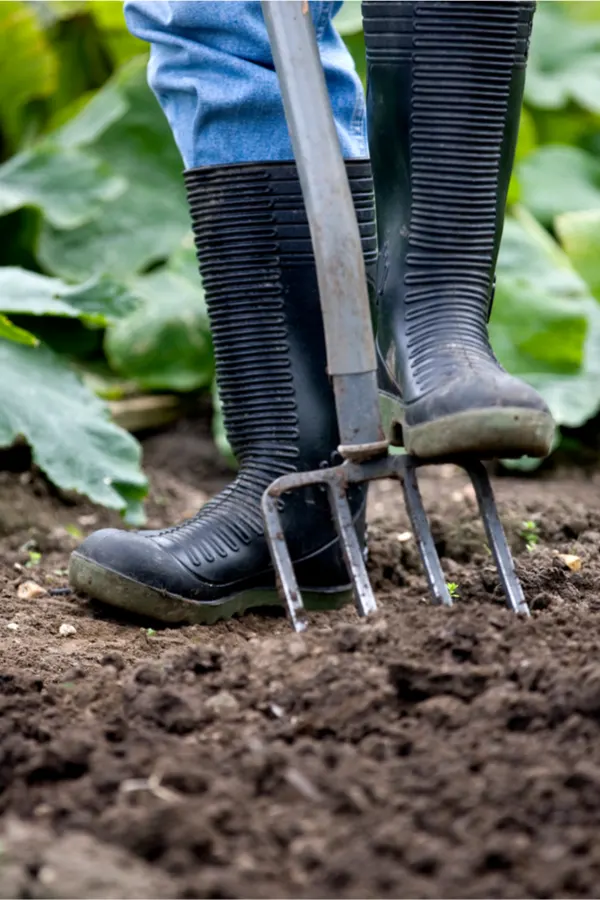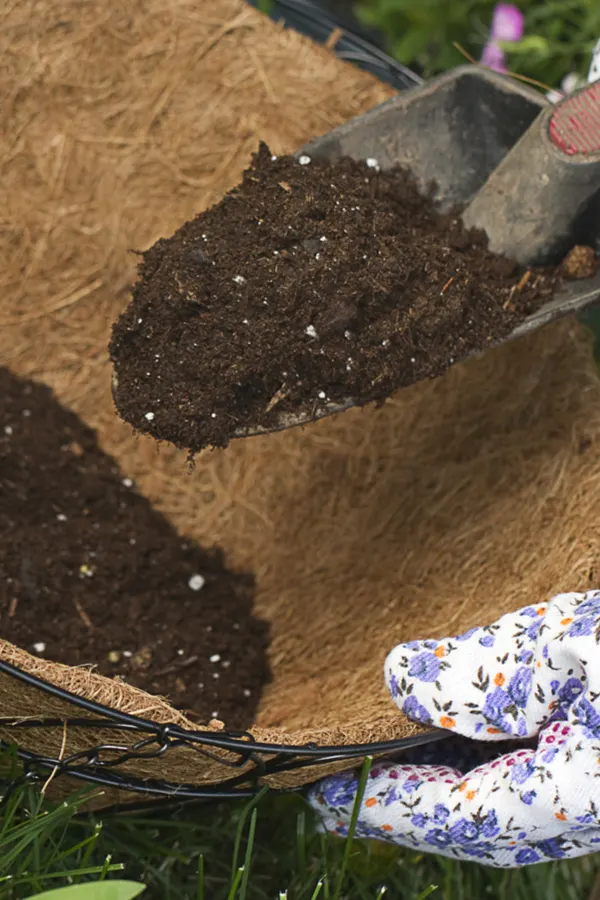This week’s how-to garden article and corresponding podcast are all about how to compost effectively in your garden. When you use compost in the garden – great things happen. Great things for your soil, and for the plants that grow in it!
Compost is the key to adding healthy nutrients to your soil naturally. It’s full of life and teeming with beneficial bacteria and organisms. All of which work to rejuvenate and re-energize tired soil and help keep it productive.
Listen in to our complete podcast below on starting seeds indoors, or read on for our in-depth look on the subject in complete article form.
How effective compost is at helping your soil and plants really depends on how you use it. And some uses are certainly better and more productive than others. After all, compost takes a bit of time and work to create, so you definitely want it to use it as wisely as possible.
With that in mind, here are 5 great ways to use compost in your garden for healthier, more productive plants.
How To Use Compost In The Garden
1. When You Plant
This is number one on the list for good reason! There is simply no better way to get young transplants and seeds off to a great start than by using compost in their planting holes.

Compost not only adds key nutrients, but helps hold in moisture around the roots of transplants and seedlings. And as the plant begins to grow, it continues to supply valuable nutrients directly to the root systems.
So what is the best method for working it into your planting holes? A great practice is to fill your planting holes with a 50/50 mix of existing soil and compost.
For seed crops, fill your seed trenches with an inch or so of compost and plant the seeds directly down into the compost. Next, simply cover your seeds with existing soil and watch the magic happen!
No matter what you are planting, whether it be flowers, annuals, perennials or vegetables in the garden – mix that compost in!
2. To Make Your Own Incredible Potting Soil – How To Use Compost In The Garden, And Flowerbeds Too!
If you want to save money and have your hanging baskets and potted plants go crazy with growth – learning how to use compost effectively is a must!
We make all of our own potting soil with a simple mix of components. We use 4 parts compost, 4 parts topsoil, worm castings and perlite. It becomes the perfect medium for growing all of your potted planters, hanging baskets and containers.

What about those commercial bags that contain slow release fertilizers to help? You simply don’t need them with a great potting soil.
With the added nutrients of the compost in the mix, plants grow strong. But when you do need to give a boost to your plants, compost can come to the rescue again. And it does so with incredible compost tea.
3. To Make Compost Tea – The Amazing All-Natural Liquid Fertilizer
Compost tea or “black liquid gold” is an all organic “miracle-growing” solution. That is, minus the chemicals and high salt content that commercial fertilizers add to your soil. It works its magic in two ways.
First it feeds your plants through the roots. It does this by leaching its nutrients slowly, allowing the roots to soak it up. But compost tea also work through foliar action. As the compost tea hits the leaves and stems, the nutrients are absorbed, providing quick power to the plants.
Unlike synthetic fertilizers, it won’t build up chemicals and salt levels that can slowly destroy your soil structure. Instead, it adds nutrients that build the soil.
Article Link : How To Make Your Compost Tea At Home
We apply our compost tea with a watering can or a simple garden sprayer. We soak the area around the root base and the leaves of each plant with the solution.
The minerals and nutrients absorb through the leaves (foliar absorption) as well as through the root zone – doubling the effect. As with watering, it is best to apply early in the day before the sun is too hot and the tea can burn the leaves of plants.
4. As A Mulch
Compost is simply incredible to use as a mulch around your plantings! We mulch all of our annual plantings with an inch or two layer of compost about 6 inches in diameter around each and every plant.
Not only does the compost act as the perfect mulch, keeping moisture in and weeds out – but it also adds valuable nutrients as it breaks down in the soil.
There is another benefit as well. Every time it rains or you water, the nutrients leach out of the compost and into the soil around your plants, feeding them even more. It’s the ultimate win-win of composting and mulching.
5. As A Fall Or Spring Top Dressing:
If you make enough compost – you can use it as an excellent top-dressing for your garden beds each year. Every fall or spring, (or both if you have enough) we like to add a few inches of compost to all of our raised row beds.
Each and every year, our soil becomes easier to work and more fertile with the added compost.
Even if you can only make enough to put an inch or so on top of your beds to work in, it will help! It will pay big dividends over time to increase your soil’s fertility and vitality.
You truly can never make too much compost. You can use it nearly anywhere in your landscape to power plants and soil. Here is to making great compost, and to growing better than ever this year!
Additional Links
How To Make Homemade Potting Soil Using Compost
Filling Your Raised Beds With Power – How To Use Compost!
How To Compost Like A Pro – A Simple Guide To Making Compost
Follow Our Facebook Page For Even More Great Tips! Simple Garden Life Facebook Page
Simple Garden Life is a website dedicated to keeping gardening fun, simple and enjoyable! We publish two new articles each week along with a new garden podcast episode every two weeks. This article may contain affiliate links.
